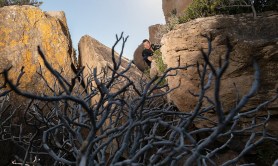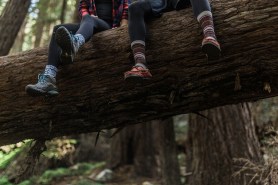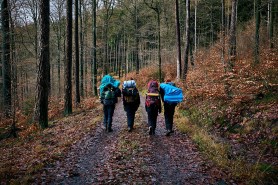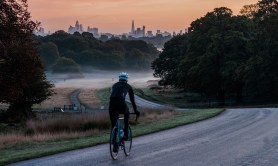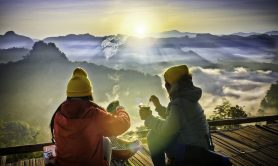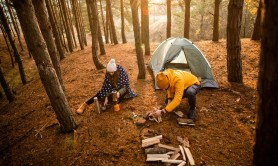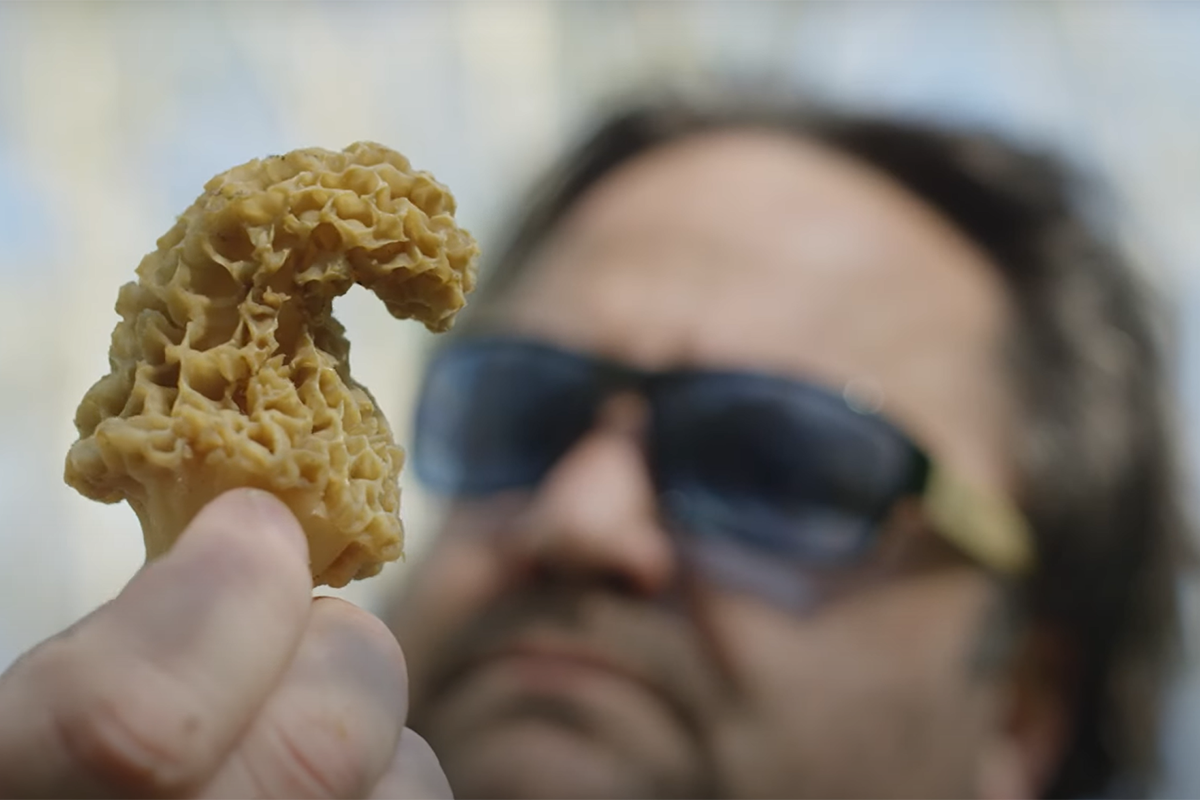

Even if you have 20/20 vision, foraging for forest fungi can be a tough task. The natural blend of colors between dark-colored mushrooms and the forest floor can make mushroom hunting not so fun.
Videos by Outdoors with Bear Grylls
If you’re interested in foraging, you’ve probably got some targeted ads promoting a product and solution for these specially designed glasses to help you find mushrooms. And yes, they are a real thing. In theory, morel mushroom hunting glasses that can enhance your vision to spot those shrouded shrooms are the perfect solution to work smarter and not harder.
In this article, I’ll take a deeper look into the data and science behind morel mushroom hunting glasses to provide additional information to help you determine if they are worth it for you. Plus, I completed an in-depth mushroom hunting glasses review to give you an honest opinion on whether or not this product is just another gimmick.
Mushroom Hunting Glasses Review
Fungeyes Mushroom Hunting Glasses
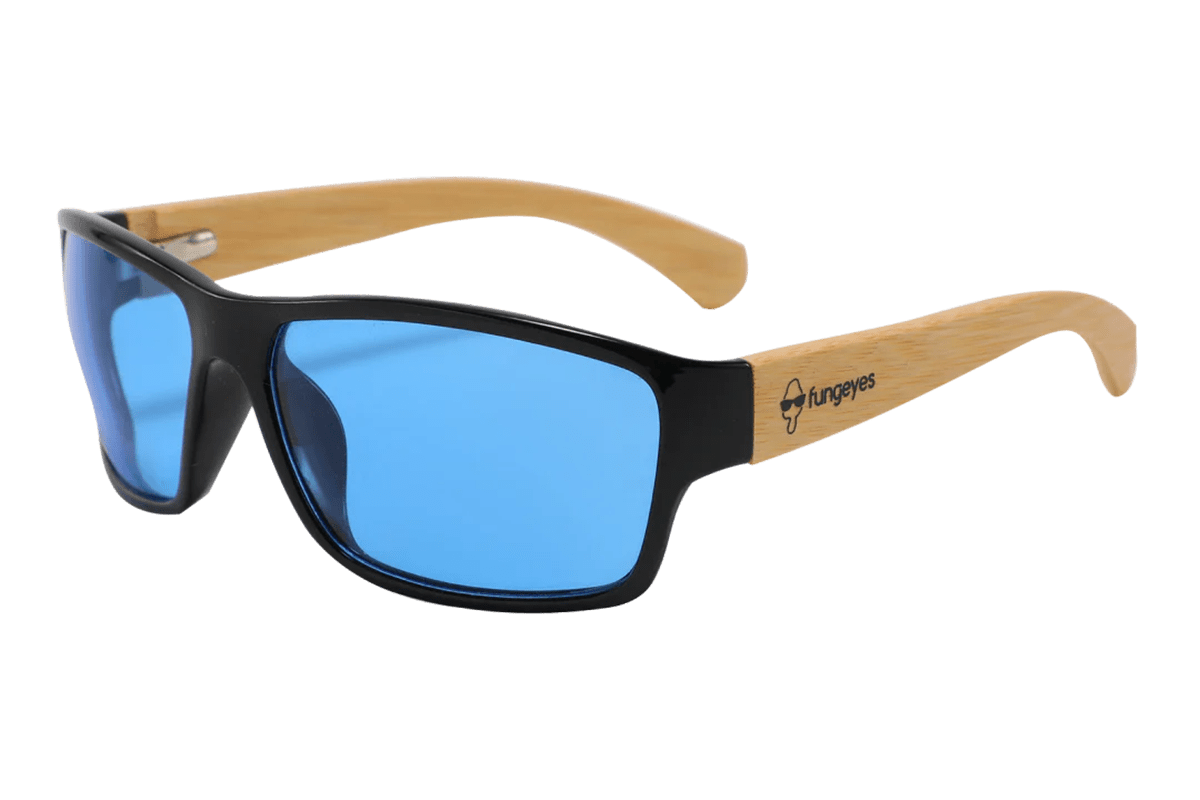
Overview: The Fungeyes Mushroom Hunting Glasses feature polycarbonate frames that are light and sturdy, making for the perfect eyewear for long foraging days. The Fungeyes glasses frames are ergonomically designed for comfortable wear and fit on all face shapes and sizes. The glasses have spring-loaded hinges that allow for flexibility without being flimsy for long-time use. Along with the glasses’ maximum comfort features, the Fungeyes mushroom hunting glasses also pride themselves on ultimate sustainability. The temples of the frames are made from all-natural materials including real bamboo plants, real oak trees, and real ebony trees. Each pair of Fungeyes mushroom hunting glasses comes with a carrying case made of durable recycled cork material and a microfiber pouch and cleaning cloth. The hard case is perfect to protect the frames during long treks and the soft pouch allows you to take it with you wherever you go.
Price: $89.99
Colors: Bamboo, Ebony, and Gray. Each pair of Fungeyes mushroom hunting glasses is unique, as the different temples of the frames are made from real wood and bamboo.
In Action: While skeptical at first, after putting the Fungeyes mushroom hunting glasses to use, I can confidently say that they are a great tool that helps to provide greater light and dark contrast. I found that it works especially well to identify the morels when hidden among leaf debris. While foraging for morels is still a serious feat, the specialized colored lenses help with scanning every inch of the forest floor for the mystical fungi. Additionally, I found that the frames were lightweight and comfortable to wear even on full-day forages. To truly test the morel mushroom hunting glasses to the full extent, I had multiple friends try the glasses on, and was surprised that the frames fit multiple head shapes and sizes! So far, the glasses are holding up throughout the season, and the hard carrying case helps to keep them protected, even when pushed to the bottom of my hiking backpack. I had an issue with the first pair that was delivered, but their customer services department was quick to respond and sent a new pair within the week. While I had originally believed that these Fungeyes glasses were just another gimmick, they are now an essential tool I bring with me for all my foraging adventures.
Fungeyes Mushroom Clip-On Hunting Glasses
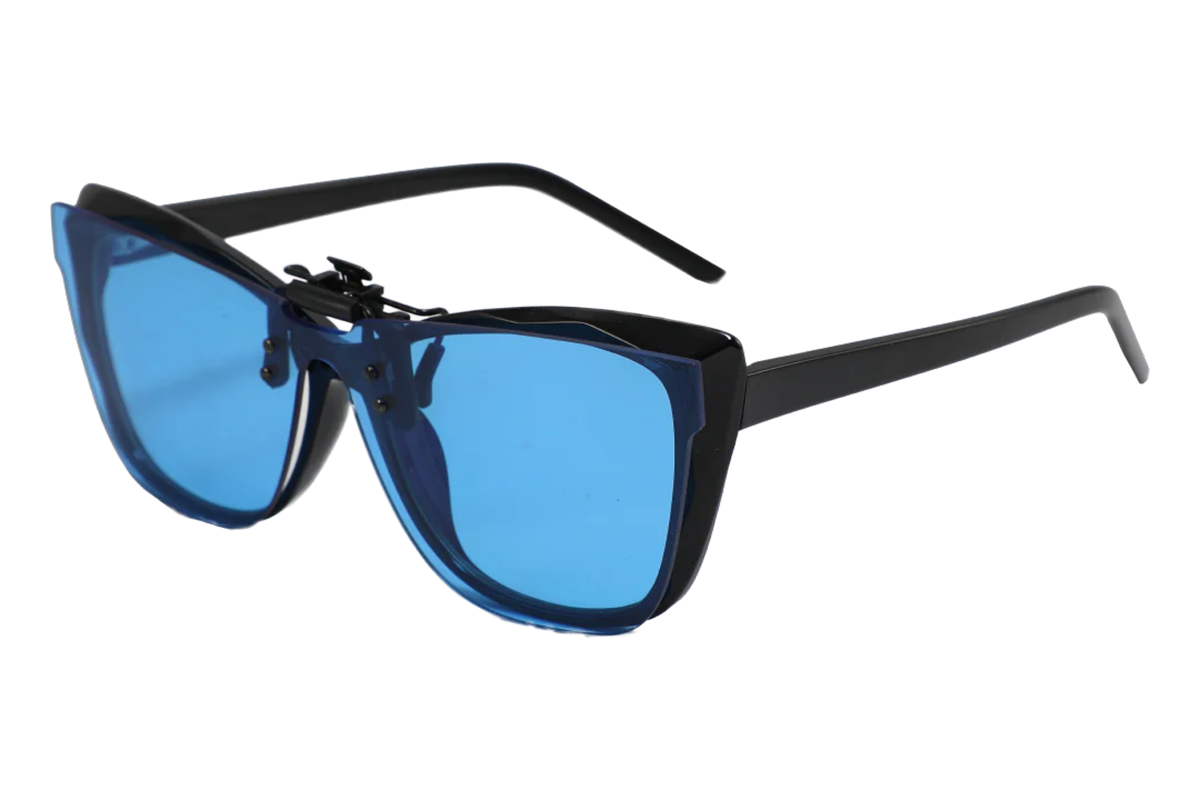
Overview: Another option with the same scientifically engineered lenses is the Fungeyes mushroom hunting clip-on lenses. The Fungeyes clip-on hunting glasses attach easily to your prescription lenses without damaging or scratching the frames. The clip-on lenses can be flipped up when you are not using them and can be easily placed downward when scanning the forest floor. The Fungeyes mushroom hunting glasses come with a small set and a large set of clip-on lenses that ensure they fit any pair of glasses that you may have. Additionally, the clip-on hunting set comes with two microfiber pouches for the combo of lenses, a microfiber cleaning cloth, and the hard-carrying cork case for extra protection.
Price: $89.99
In Action: As a contact lens wearer and a glasses wearer, I was able to try both options. While I do not prefer to go foraging when wearing my glasses, I found that the clip-on lenses were sturdy and convenient for those who do. For those who do wear glasses regularly, this is a great option without having to switch back and forth between frames. The lenses are exactly the same as the ones on the Fungeyes mushroom hunting glasses and truly help to provide a greater contrast for your mushroom hunt. The clip-ons feature a rubber grip that protects your prescription glasses and ensures easy attachment and detachment. The Fungeyes mushroom hunting clip-on glasses are a great option that has the same technology and durability as the original. If you are a glasses wearer, fear not, as Fungeyes makes your vision even better than 20/20 when foraging for morels this season.
Where to Find Them?
Fungeyes Mushroom Hunting Glasses are easily purchased online. Their site also presents Fungeyes mushroom glasses reviews from different users that may provide additional input and perspective into determining if the product is right for you. Their website is easy to use and shipping is free with a money-back guarantee. Additionally, if you are looking to shop in-store, the Fungeyes glasses are available at Scheels Sporting Goods stores. Scheels has stores located in several states in the Central United States, perfect if you want to check the morel mushroom hunting glasses out for yourself.
What are Mushroom Hunting Glasses?
Mushroom hunting glasses are specially designed glasses to help amplify the contrast between the color of mushrooms and the similar ones of that of their surrounding landscape. The scientifically engineered lenses typically feature a blend of color lenses that will help to enhance certain tones in the morel mushrooms that may not be present in the surrounding areas of the forest floor. Specifically, the color manipulation technology helps to bring out the morel’s light yellow, white, and dull gray tones. Since morels are notably difficult to spot, the morel mushroom hunting glasses are made specifically to spot the more hidden and camouflaged fungi.
Morel mushroom hunting glasses work similarly to colored hunting glasses. Hunting glasses come in an array of different colored lenses that work for different targets and environments to provide greater contrast. Since morel mushrooms all have the same natural blend of colors and are found in similar environments, the specialized fungi hunting glasses utilize a blend of colored lenses to help the specific tones of the mushrooms pop. While putting on the morel mushroom hunting glasses may not exactly highlight the morels against its forest backdrop, the enhancement may be helpful when foraging.
Why You May Need Mushroom Hunting Glasses
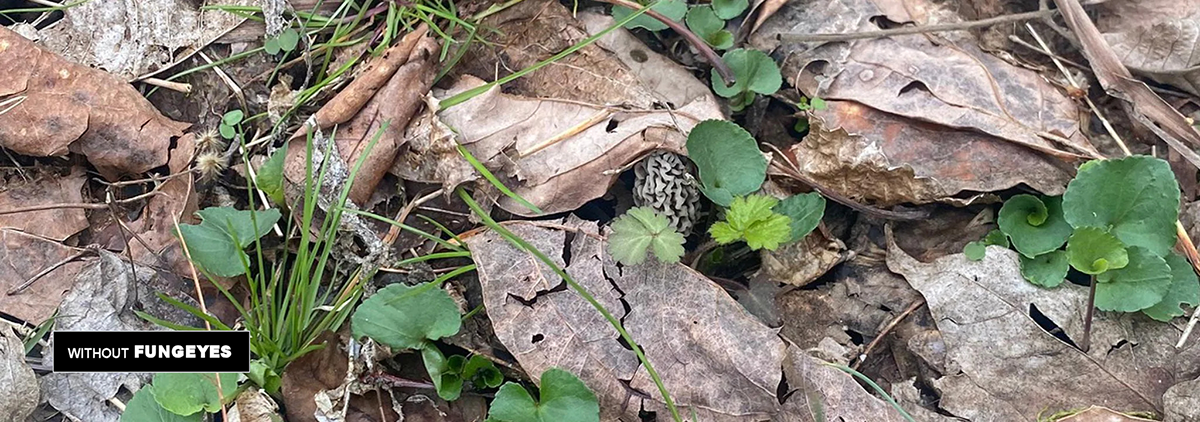
Morels are magical mushrooms not only because they are delicious, but also because they are known to be specifically elusive and remain a mystery for even the most experienced foragers. The colors of the morel mushrooms include tones of yellow, brown, grey, and black. The caps feature a honeycomb pattern that blends especially well with the dark brown wood grain of the forest foliage. Morels grow low to the ground and require very specific environments to thrive in. Due to the difficult nature of foraging for the mystical morel, new technology and tools will help for a more successful foraging season. If you specifically enjoy foraging for morels and other more concealed fungi, morel mushroom hunting glasses may be worth checking out.
Tips When Foraging For Masked Morels

Best Season for Foraging
Due to the specific conditions that morels thrive in, the best season for foraging is typically in the Spring. Usually from March through July is when you’ll have the best luck. Depending on where you live and the weather conditions of the season, the best time to begin foraging will range and change from year to year. Morels thrive in temperatures ranging from 50 to 60 degrees. Since winters tend to be colder and wetter, spring is when the fungi typically appear. The most important factors for morel growth, or any fungi are temperature and moisture. Since morels prosper in colder temperatures, it is helpful to keep an eye out on the mountains for when the snow melt begins. Morels also prefer moist soil, so rainy or snowy winters are perfect. Once the snow melts, morels are typically spotted in lower elevations, then move up the mountain as the temperature begins to warm up in the late spring months.
While it is difficult to say which season or month is most ideal for morel foraging, the environment that they typically develop in can help give a better idea of when to go out hunting. Additionally, there is typically a spike in morel mushroom growth after the ground is disturbed, clear cut, or following a wildfire. Along with monitoring the weather conditions, it may also be helpful to do some digging into any recent events that may have occurred in the area you are looking to forage.
Where to Look
While veterans have created a Morel Mushroom Map to help guide foragers to places where the fungi have been spotted, the rare and elusive morels can be found even in the most unsuspecting places. Although the map can give you a general idea of where the mushrooms have been spotted previously, sometimes the over-traveled areas won’t give you much luck. Based on the conditions and types of areas that morels frequent, you may be able to get a better idea of where to start looking.
Morel mushrooms tend to grow in high moisture areas around the base of trees such as Sycamore, Ash, Aspen, Oak, Elm, Hickory, and fruit trees. Since the fungi are found on low-level ground, dead or dying trees may be a good place to spot them. While they can be found in any state, they are the most plentiful in the Northeast, Midwest, and Mid-Southern regions of the United States, due to the weather conditions and flora in these regions.
Along with the bases of trees, another spot to begin your search may be along creek beds in lower elevations. While morels do like moisture, make sure to look in areas near the creek and not in the soaking wet river bed. The spores are transmitted through water, wind, or animals, so looking along the creek can be a great starting point. Fungi prosper in loamy soil, a mixture of sand and silt that is rich in calcium and lime. To identify loamy soil easily, just take a stick and press down on the soil. You want the ground to break through with just a little bit of pressure. Again, while these are the conditions that are frequented by morels, even the most veteran foragers will tell you that the elusive fungi can be found right in the middle of the river bed or the most unsuspecting places, although rare.
Explore the Road Less Traveled
Foraging for morels has grown in popularity in recent years. While they are delicious mushrooms, the mystical nature of this hard-to-find fungi makes it even more appealing for foragers to hunt them down. While the morel map may be a great tool to begin your search, often those areas are already over-foraged and you may turn up with nothing. Be adventurous and venture out into deeper parts of public lands and parks, off the beaten path, safely.
Watch Out for False Morels
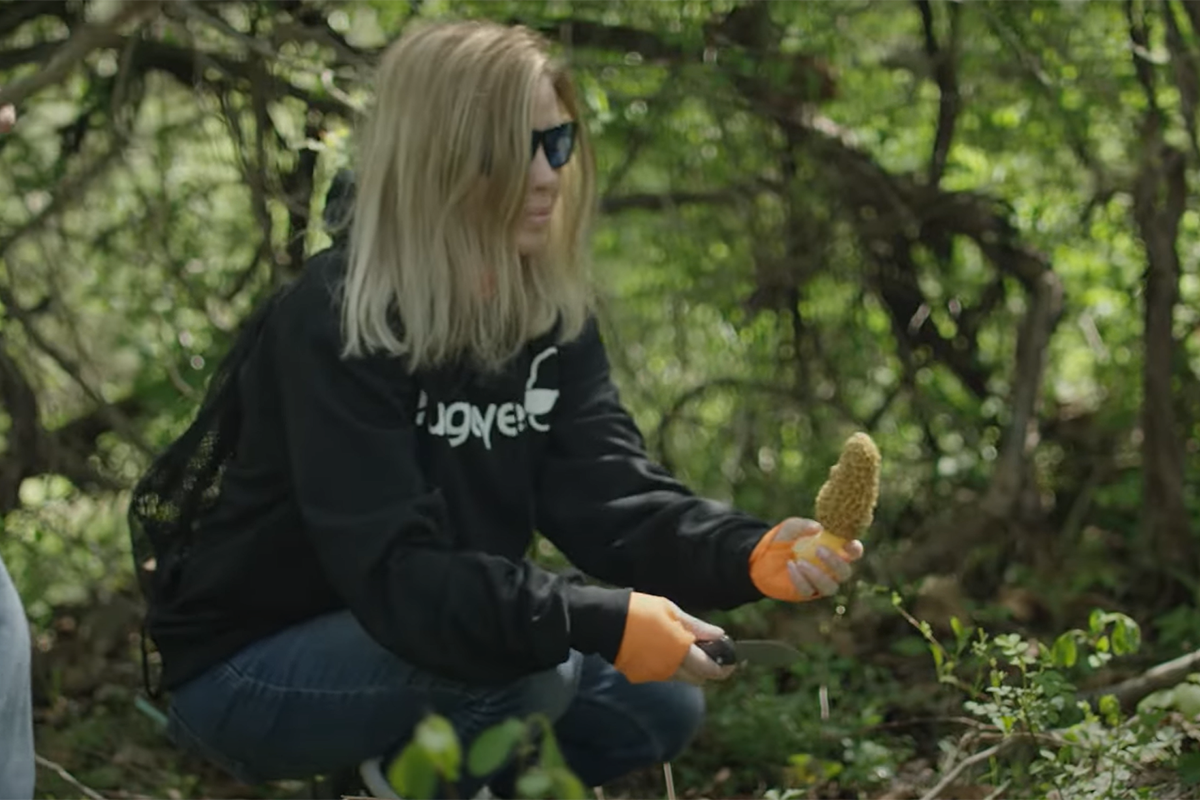
While it may be exciting to catch a glimpse of your first morel, it is also important to be cautious and look out for false morels. The fake morel resembles notable physical aspects of a morel mushroom but is toxic and should be avoided. One notable distinction between the morel and its fake is that the false morel is not hollow. There are plenty of mushroom-identifying apps if you are not sure. But as a rule of thumb, when in doubt, just leave it and keep hunting!
Use Tools and Technology
Along with the essential foraging tools, it may be helpful to utilize additional tools and newer technology to aid in your search. Some additional tools include a soil thermometer, hiking staff, and morel mushroom hunting glasses. Since the morels thrive in specific temperatures and moisture levels, a soil thermometer can give you a more accurate reading to determine the best foraging spots. A walking stick not only assists you with hiking safely, it can also be a great tool to poke and prod for loamy soil. Lastly, a newer gadget, morel mushroom hunting glasses can provide greater contrast within the subtle tones of flora to help you spot the more shifty shrooms.
Are mushroom-hunting glasses worth the hype?

While morel mushroom hunting glasses may not be a necessity for your foraging adventures, they certainly are a great tool to aid in the hunt. While the product may seem like a gimmick, the innovative colored lens technology does assist when searching for the camouflaged mushrooms. Check out the extensive evaluation of the Fungeyes mushroom hunting glasses review to see if they may be worth adding to your foraging tool kit. The morel mushroom hunting glasses allow you to keep all the thrill of tracking down the mystical morels while giving you a slight edge in spotting them. Hopefully, this review helped to provide some clarity to help you on your ventures during this upcoming foraging season.
Looking for a different kind of eye protection? Find the best hiking sunglasses.


